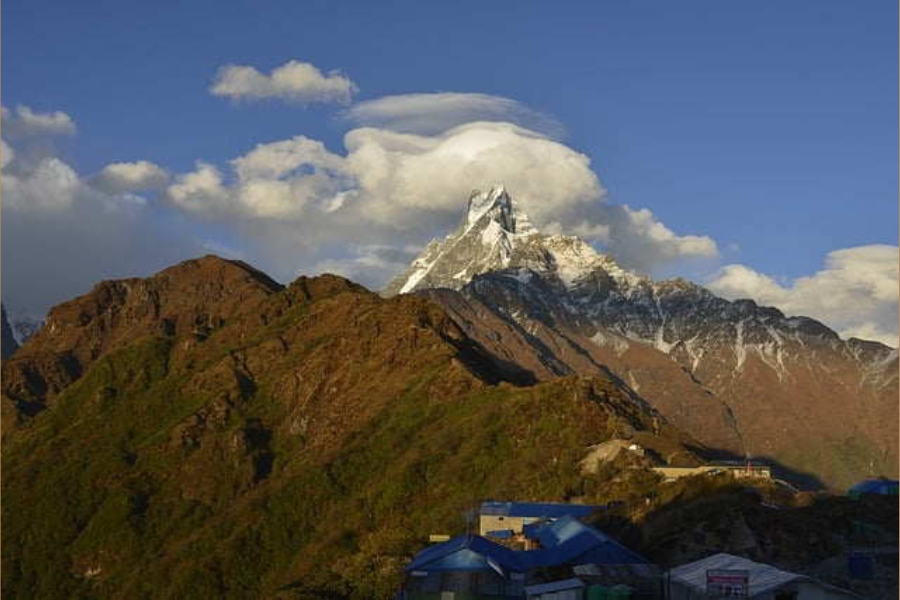Discovering the Himalayan Resting Places: Sanctuaries of Serenity and Spiritual Awakening
The Himalayas, often described as the “abode of snow,” stretch majestically across five countries: Bhutan, China, India, Nepal, and Pakistan. Beyond their sheer geological grandeur, these mountains embody a profound concept known as the Himalayan resting place—a sanctuary both physical and spiritual, offering solace, tranquility, and a deep connection to nature and spirituality.
The Himalayas: Nature’s Magnificent Tapestry
An Extraordinary Natural Wonder
The Himalayan range is renowned for its towering peaks, with Mount Everest standing as the pinnacle at 8,848 meters (29,029 feet). This natural barrier profoundly influences the climate, culture, and biodiversity across its vast expanse. From the verdant valleys of Bhutan to the rugged plateaus of Tibet, the Himalayas encompass diverse ecosystems supporting a rich array of flora and fauna. Scientific study and conservation efforts are crucial to preserving this ecological diversity.
A Diverse Cultural Mosaic
Culturally, the Himalayas are a melting pot where languages, traditions, and religions converge. Buddhist monasteries cling to precipitous cliffs in Bhutan and Tibet, while Hindu temples dot the Indian Himalayas, each site resonating with its unique spiritual aura. This cultural diversity adds to the region’s allure, drawing pilgrims and travelers alike seeking spiritual enrichment amidst the mountains’ splendor.
The Concept of the Himalayan Resting Place
A Sanctuary for the Soul
The Himalayan resting place transcends its geographical definition, embodying a sanctuary where seekers of peace and enlightenment undertake both physical and spiritual journeys. These places, often remote and challenging to access, symbolize the arduous path toward inner tranquility. Amidst the serene landscapes, visitors find respite from the pressures of modern life, fostering introspection and a profound connection with nature.
Historical Significance
Historically, the Himalayas have beckoned pilgrims in search of spiritual enlightenment. Journeys to these resting places involve traversing rugged terrains and crossing formidable mountain passes—a physical manifestation of the inner journey toward self-discovery and higher consciousness. Legends and myths enshroud these sites, enhancing their mystical allure and spiritual significance across generations.
Modern Pilgrimages
In contemporary times, Himalayan resting places cater not only to spiritual seekers but also to adventurers and tourists seeking reprieve from urban life. These sanctuaries blend tranquility with adventure, offering diverse experiences amidst pristine mountain environments. Whether practicing yoga in Rishikesh or trekking to the Tiger’s Nest Monastery in Bhutan, visitors find rejuvenation and a deeper connection to the natural world.
Notable Himalayan Resting Places
Lumbini, Nepal
Lumbini, revered as the birthplace of Buddha, stands as a paramount spiritual resting place. Pilgrims flock to this UNESCO World Heritage site nestled in Nepal’s Terai plains, where the Maya Devi Temple marks the exact spot of Buddha’s birth. Amidst tranquil gardens and monasteries, visitors seek spiritual solace and reflection, perpetuating its legacy as a center of Buddhist pilgrimage.
Rishikesh, India
Situated along the sacred Ganges River in Uttarakhand, Rishikesh is hailed as the “Yoga Capital of the World.” Its hills and forests host numerous ashrams and retreats, inviting practitioners of yoga and meditation to delve into inner peace and mindfulness. The spiritual energy of Rishikesh, coupled with its serene environment, makes it an ideal Himalayan resting place for spiritual rejuvenation.
Paro Taktsang, Bhutan
Perched precariously on a cliff 900 meters above Paro Valley, Paro Taktsang, or the Tiger’s Nest Monastery, is among Bhutan’s most sacred sites. Legend has it that Guru Rinpoche meditated here in the 8th century, imbuing the monastery with profound spiritual significance. The pilgrimage to this remote site involves a rigorous climb rewarded by breathtaking views and a deep sense of serenity—a quintessential Himalayan resting place experience.
Dharamsala, India
Dharamsala, nestled in Himachal Pradesh, serves as the residence of the Dalai Lama and the Tibetan government-in-exile. This town is a vibrant hub of Tibetan Buddhism, drawing spiritual seekers to its meditation centers and monasteries amidst the picturesque Dhauladhar mountain range. Dharamsala exemplifies the Himalayan resting place, offering a serene environment for spiritual introspection and cultural immersion.
The Journey to Himalayan Resting Places
Physical Challenges
Visiting Himalayan resting places entails navigating challenging terrains and enduring unpredictable weather conditions. The journey tests one’s endurance, reflecting the physical and mental resilience required to attain spiritual enlightenment amidst the mountains’ isolation and majesty.
Spiritual and Emotional Transformation
The physical pilgrimage to Himalayan resting places often catalyzes profound spiritual and emotional growth. As travelers confront their physical limitations on mountain paths, they also embark on an inner journey of self-discovery and introspection. The Himalayas’ awe-inspiring landscapes provide an ideal backdrop for spiritual awakening and renewal, fostering a profound connection with oneself and the natural world.
Ecological Impact
While tourism enriches local economies, it poses challenges to the fragile Himalayan ecosystem. Sustainable tourism practices are essential to preserving the region’s natural beauty and cultural heritage. Initiatives promoting eco-friendly accommodations, waste management, and community-based tourism aim to mitigate environmental impact, ensuring these sanctuaries remain pristine for future generations.
The Future of Himalayan Resting Places
Balancing Tourism and Conservation
As the Himalayas gain popularity, balancing tourism with conservation becomes paramount. Sustainable development initiatives, including eco-friendly infrastructure and cultural preservation efforts, safeguard the region’s natural and cultural integrity. Responsible tourism practices ensure that Himalayan resting places continue to inspire and nurture spiritual and cultural enrichment.
Cultural Preservation
Preserving Himalayan communities’ cultural heritage is vital amidst increasing tourism. Supporting local traditions, crafts, and languages fosters cultural authenticity, ensuring these resting places retain their spiritual significance. By respecting and promoting cultural diversity, Himalayan sanctuaries continue to offer enriching experiences rooted in tradition and history.
The Role of Technology
Advancements in technology enhance accessibility to remote Himalayan resting places, improving infrastructure and connectivity for visitors. While these innovations facilitate convenience, it is crucial to integrate them responsibly to preserve the sanctity of these sacred sites. Balancing technological progress with environmental and cultural preservation ensures sustainable development and benefits local communities.
Conclusion
In conclusion, Himalayan resting places stand as timeless sanctuaries amidst the awe-inspiring beauty of the Himalayan mountains. These sites, steeped in cultural heritage and spiritual significance, offer seekers of peace and enlightenment a unique journey into introspection and renewal. As tourism grows, it is imperative to prioritize sustainability and cultural preservation, safeguarding these treasures for future generations. Himalayan resting places remain havens where physical journeys mirror spiritual quests, fostering connections that transcend the ordinary and resonate deeply within the soul.
“Explore the essence of adventure and discovery at vlineperol.blog.”







